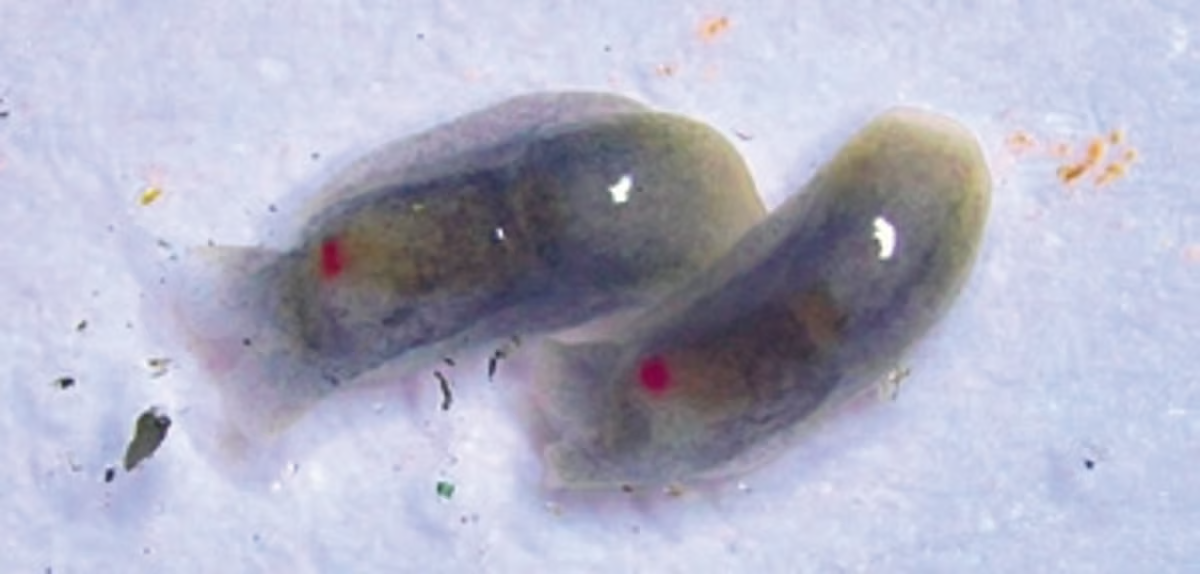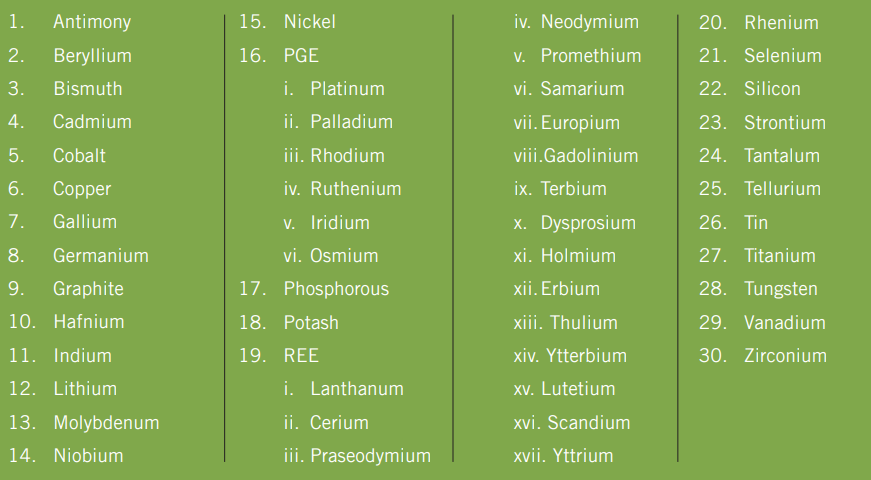Table of Contents
New Marine Species named after President Murmu
Context: The Zoological Survey of India (ZSI) has named a new marine species of head-shield sea slug with ruby red spot which was discovered from West Bengal and Odisha coast after President of India Droupadi Murmu.
About The Specie
- Name: Melanochlamys droupadi (in honour of the President of India, Droupadi Murmu.)
- Location: The species was found specifically in Digha (West Bengal), and Udaipur (Odisha).
- Unique Habitat: Melanochlamys droupadi is unique to the world, not found in any other region.
- Genus Characteristics: The Melanochlamys genus is known for its short, blunt, cylindrical body and two dorsal shields with a smooth surface.

- Description of the Species:
- The sea slug is a small, hermaphroditic invertebrate, growing up to 7 mm in length, with a brownish-black colour and a ruby red spot at the hind end.
- It has an internal shell and is usually found crawling in intertidal zones, leaving marks on sandy beaches.
- Distribution: While species in this group are typically found in temperate regions of the Indo-Pacific, three species including Melanochlamys droupadi are known to be tropical.
- Adaptive Behavior: Research indicates that Melanochlamys droupadi secretes a transparent mucus forming a protective sheath and crawls under smooth sand to create a moving capsule, rarely exposing its body.
We’re now on WhatsApp. Click to Join
India’s Leopard Population
Context: According to a report by the Environment Ministry of India, India’s leopard numbers rose by 8% from 12,852 in 2018 to 13,874 in 2022.
India’s Leopard Population Survey: Key Points
- Population: The survey found 13,874 leopards across 20 Indian states, with
- Madhya Pradesh has the highest count (3,907).
- Maharashtra (1,985), Karnataka (1,879), and Tamil Nadu (1,070) also had significant populations exceeding 1,000 each.
- Decline: While overall population is stable, some regions like
- Uttarakhand: 22% decline attributed to poaching and human-animal conflict.
- Unlike tigers, leopards are more adaptable and found outside protected areas, leading to higher mortality due to conflict with humans and livestock.
- Regional Variations: The survey focused on 70% of leopard habitat (forest areas) and revealed:
- Shivalik hills and Gangetic plains: 3.4% annual decline
- Central India, Eastern Ghats, Western Ghats, Northeast hills, and Brahmaputra floodplains:5%, 1%, 1%, and 1.3% annual growth respectively
- Increase: A significant increase (150% rise to 349) was reported in Arunachal Pradesh, Assam, and West Bengal.
- The sharp rise in Northeast India might be due to more extensive sampling and camera traps compared to previous surveys.
- Protected Areas: About a third of the leopards reside within protected areas, and tiger reserve conservation indirectly benefits leopards by preserving their habitat.
- Methodology: The survey involved extensive efforts, with forest surveyors covering 6,41,449 km and analysing data from 4,70,81,881 photographs captured by camera traps at 32,803 locations.
Critical Minerals
Context: India began the second part of its critical minerals auction worth ₹30 trillion rupees (about $362 billion).
More In News
A total of 18 blocks of critical and strategic minerals, including graphite, tungsten, vanadium, cobalt and nickel, among others, will be auctioned in eight States
What are Critical Minerals?
- Critical minerals are mineral resources, both primary and processed, that are essential inputs in modern technologies, economies, and national security.
- They are characterised by the risk of supply chain disruption due to non-availability and price volatility.
- These minerals play a crucial role in various industries and sectors and have limited substitutes, making them of strategic importance.
- India’s Identified Critical Minerals: An Expert Committee under the Ministry of Mines in India has pinpointed 30 minerals as critical for the country.
- These include minerals like Antimony, Beryllium, Bismuth, Cobalt, Copper, Gallium, and Germanium. Others on the list are Graphite, Hafnium, Indium, Lithium, Molybdenum, Niobium, and Nickel, along with PGE (Platinum Group Elements), Phosphorous, Potash, REE (Rare Earth Elements), Rhenium, Silicon, Strontium, Tantalum, Tellurium, Tin, Titanium, Tungsten, Vanadium, Zirconium, Selenium, and Cadmium.

Auction Process in India
| Aspect | Details |
| Minerals in Auction | About 20 mineral blocks including lithium, REE (rare earth elements), nickel, copper, chromium, phosphorite, potash, glauconite, graphite, manganese, and molybdenum. |
| Duration of Auction | The auction process is set to complete within 103 days from its commencement. The government plans to phase in more critical mineral blocks for auction. |
| Types of Agreement |
|
| Exploration Period under CL | The licensee has 3-5 years for exploration, after which they can apply to convert their CL to an ML. Failure to complete exploration can result in licence withdrawal. |
| Clearances Required | Out of the total 7,197 hectares concession area, 17% is forest land. Licensees must obtain 15 approvals and clearances, including forest clearance, environmental clearance, Gram Sabha consent, etc., before beginning operations. |
| Key changes In Mines and Minerals (Development & Regulation) Amendment Act of 2023 |
|


 List of Chief Ministers of Jammu and Kas...
List of Chief Ministers of Jammu and Kas...
 Cabinet Committee on Security Suspends I...
Cabinet Committee on Security Suspends I...
 Pahalgam Terror Attack: All Eyes on Paha...
Pahalgam Terror Attack: All Eyes on Paha...






















